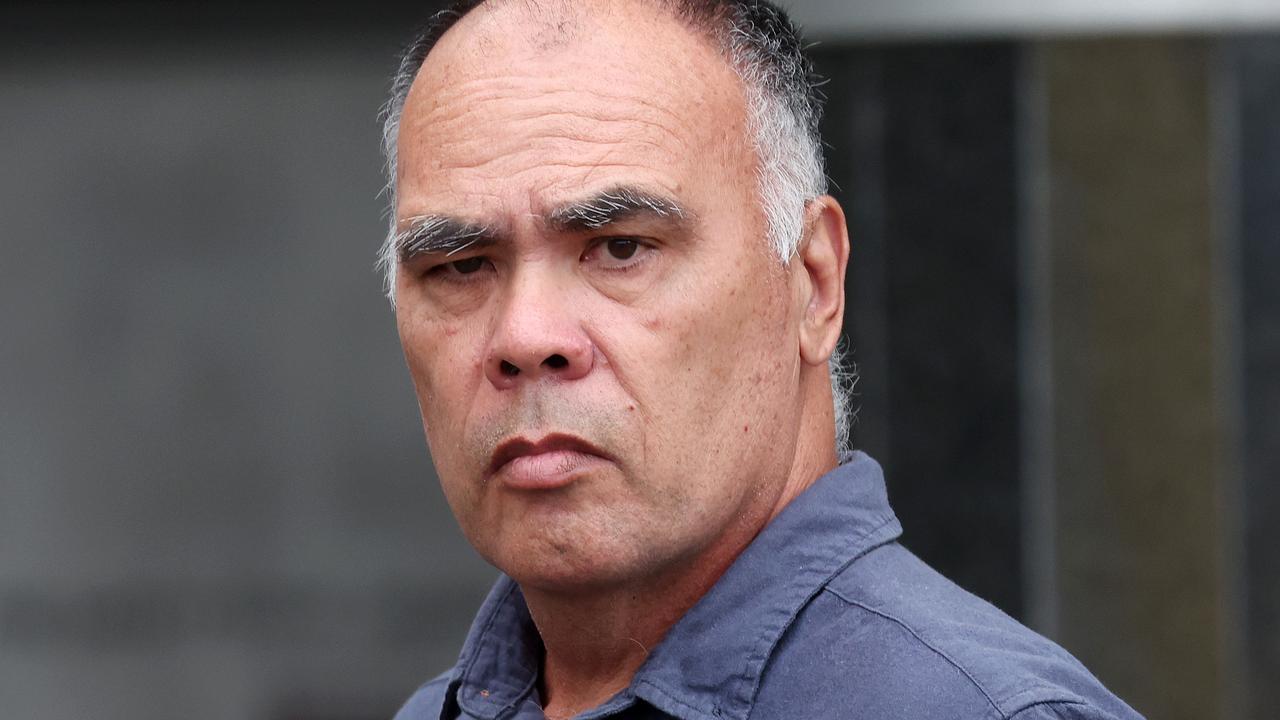‘Just surreal’: Sunshine Coast Diamond Princess virus survivors open up after recovery
A Sunshine Coast couple who were among 700 people who contracted coronavirus on the Diamond Princess have shared their harrowing story of being trapped on the ill-fated cruise ship off Japan.

QLD News
Don't miss out on the headlines from QLD News. Followed categories will be added to My News.
A QUEENSLAND couple who battled the coronavirus after being trapped on a cruise ship has shared their journey of hardship and heartbreak while the deadly virus took hold across the world.
Sunshine Coast couple Paul and Coralie Williamson were among 2666 people trapped on the Diamond Princess cruise ship off the coast of Yokohama in early February.
Diamond Princess evacuees hit alcohol-free camp in Darwin
How were so many people infected with coronavirus on the Diamond Princess cruise ship?
Their two-week holiday through the ports of Asia ended in a nightmare when guests received word a male Hong Kong passenger had contracted coronavirus.
The ship returned to Yokohama Port and, in a close shave with freedom, bags were collected and passengers prepared to disembark before a last-minute lockdown trapped them on the ill-fated ship.
Luggage was returned to rooms and guests told to remain in their cabins while urgent health tests were taken on every passenger.
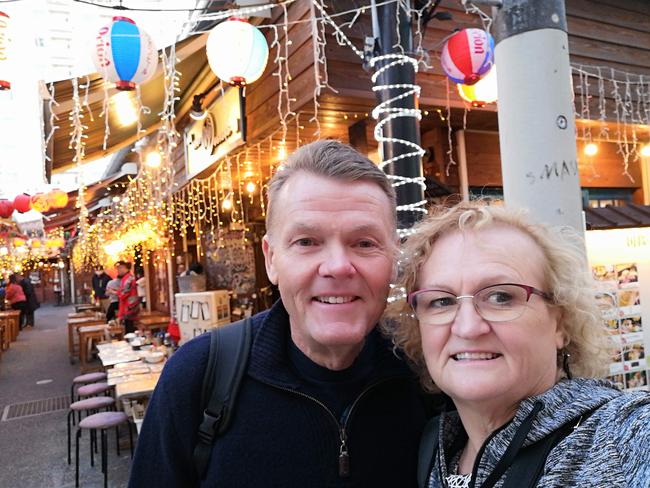
It was the start of two weeks of isolation for the Sunshine Coast couple, who were among 200 Australians trapped on-board with limited information about the rapidly-spreading virus.
“Everyone was trying to do their best but the situation was evolving so quickly,” Mr Williamson, 62, said.
“We got information from the ship’s captain hours after it had already been reported in the media.”
The couple had a room with a balcony and managed to record 12,000 steps on their FitBit watch each day, cherishing the time together.
“We were happy to be there because we have friends who would have loved to spend two weeks with their partner because their partner has passed away,” Ms Williamson, 57, said.
But in a shock diagnosis and showing no symptoms, Mr Williamson tested positive for the virus just three days before the couple were due to leave Japan for Australia on a Qantas evacuation flight.
“It was surreal,” he said.
“I wasn’t scared because I had no symptoms.”
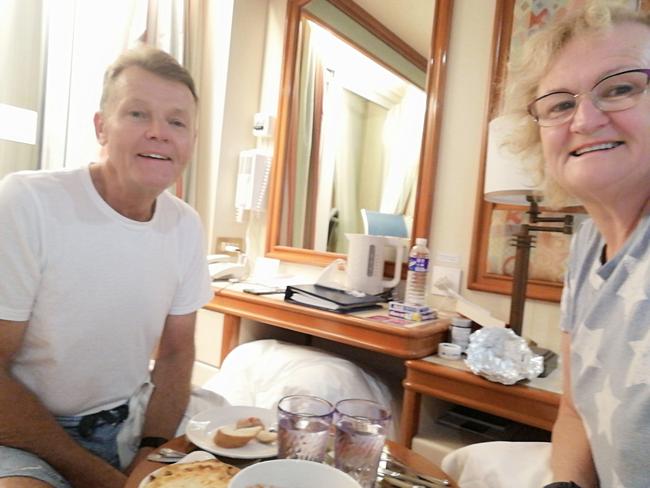
Arrangements were quickly made for Mr Williamson and fellow virus-positive passengers – which there would eventually be 700 – to transfer to a newly-built medical facility on mainland Japan.
The approaching evacuation created the hardest decision of Ms Williamson’s life … to stay with her husband of 34 years or fly alone to Australia.
She reluctantly chose to return home.
“I just had to get on that flight because we knew the (Australian) borders would have started to tighten,” an emotional Ms Williamson recalls.
“The hardest part was watching him go off in this bus, part of a convoy surrounded by army vehicles.
“I was on the balcony watching and I just fell apart.
“I cried for an hour-and-a-half, pulled up the bed covers and then sobbed.”

Mr Williamson was transferred under guard to the brand new Fujita Health University Hospital nine hours away where he would spend one week recovering with a dozen other patients.
“I never developed any symptoms at any time,” he said.
He said treatment consisted only of regular temperature testing and declared the worst part of the experience was not knowing about his wife’s location or health.
Ms Williamson was soon squished among other ‘high-risk’ travellers on a Qantas plane bound for Darwin for another two weeks' quarantine at the Howard Springs facility.
Three days after arriving in the Northern Territory Ms Williamson tested positive for coronavirus.
“I wasn’t frightened when I got it,” she said.
“The only symptom I had was a slight tickle in my throat.”
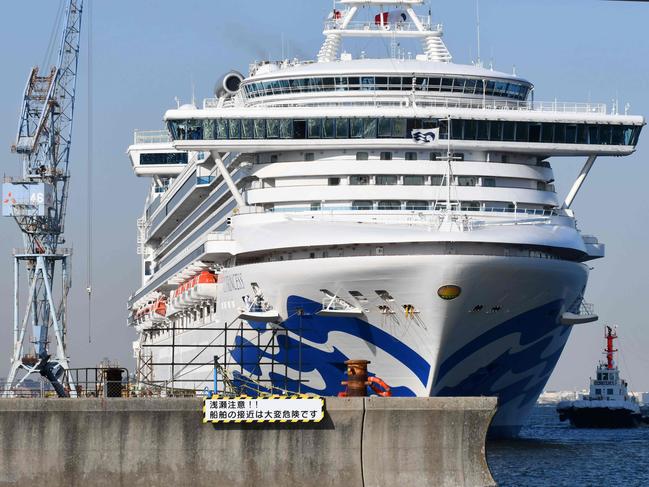
The semi-retired schoolteacher was then flown by LifeFlight to Brisbane and then the Sunshine Coast University Hospital where she “finally felt safe”.
“I knew all protocols in Australia had been taken, I wasn’t infecting anyone and staff knew what they were doing,” Ms Williamson recalled.
“I wasn’t worried about me but I was scared about the vulnerable people in our community.”
More than 7000km away in the bustling Fujita Health University Hospital Mr Williamson twice tested negative to the virus and was soon flying home to Queensland.
After living for three weeks in isolation, with debilitating sickness around him, Mr Williamson exited the Brisbane International Terminal, collected his car and drove home.
“The whole thing was surreal and by that time I was just so tired and happy to be on Australian soil,” he said.
“Coralie was in Sunshine Coast University Hospital so there were mixed emotions.”
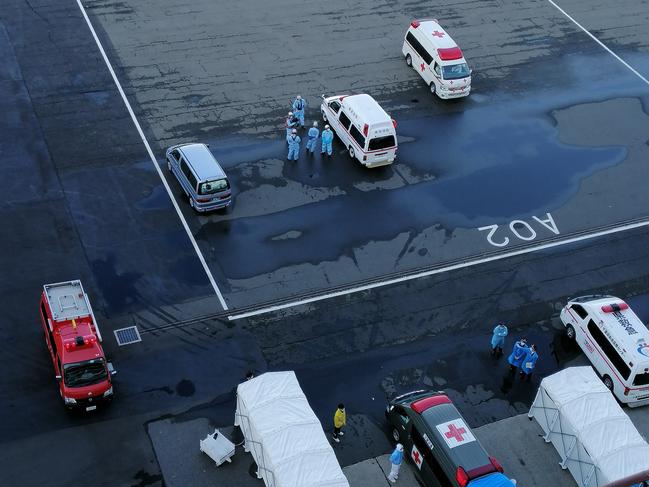
Ms Williamson was recovering well in one of the hospital’s negative pressure isolation rooms, which are designed to prevent air from escaping.
Like her husband a week earlier, Ms Williamson said her coronavirus symptoms were unremarkable.
Sunshine Coast Hospital and Health Service Infectious Diseases Director Keat Choong, who helped treat Ms Williamson and supported her husband, said coronavirus caused “mild illness” for 80 per cent of patients and severe illness for the remaining 20 per cent.
“We know the mortality is higher in older patients and those with chronic medical conditions we’re really focused on protecting,” he said.
“Those are the ones I don’t want to see infected.”
Dr Choong said the level of treatment depended on how sick a patient got, and could include oxygen therapy to support breathing and general supportive care.
He pleaded with Queenslanders to stay and home and do their part to stop spreading the deadly virus.
“There is some suggestion our curve is flattening but in our healthcare community we’re preparing for the worst,” he declared.
“We’re planning for ways on how we can deal with increasing patients.
“The staff at the hospital are working very hard to prepare … we’re trying to protect our community and families.”
He said the scenes of mass-deaths and large morgues in the United States and Italy was “what we’re trying to prevent”.
The Williamsons, who were among the first Australians to test positive to the virus, joked they felt “a bit like lepers and guinea pigs”
Both heaped praise on the ongoing work of Sunshine Coast medical staff, Qantas and government officials.
“We’re taking each day as it comes and we’re living in the moment,” Ms Williamson said.
She said the journey had taken a toll on her mental health, with some people condemning those who had the virus.
“We’ve got to support anyone who has had COVID-19,” she said.
Originally published as ‘Just surreal’: Sunshine Coast Diamond Princess virus survivors open up after recovery


